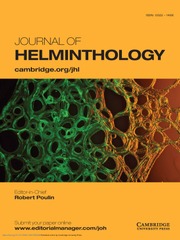Article contents
Can Schistosoma japonicum infection cause liver cancer?
Published online by Cambridge University Press: 10 February 2025
Abstract
A co-relation between Schistosoma japonicum (Sj) and liver cancer (LC) in humans has been reported in the literature; however, this association is circumstantial. Due to the inconclusive nature of this association, the International Agency for Research on Cancer has placed Sj in Group 2B for LC, signifying it to be a ‘possible carcinogen’. Many epidemiological, pathological and clinical studies have identified multiple factors, linked with Sj infection, which can lead to liver carcinogenesis. These factors include chronic inflammation in response to deposited eggs (which leads to fibrosis, cirrhosis and chromosomal instability at cellular level), hepatotoxic effects of egg-antigens, co-infection with hepatitis viruses, and up-regulation of glycolysis linked genes among others which predisposes hepatic tissue towards malignant transformation. The objective of this work is to present the current understanding on the association of Sj infection with LC. Mechanisms and factors linked with Sj infection that can lead to LC are emphasized, along with measures to diagnose and treat it. A comparison of liver carcinogenesis is also provided for cases linked with and independent of Sj infection. It appears that Sj, alone or with another carcinogen, is an important factor in liver carcinogenesis, but further studies are warranted to conclusively label ‘infection with Sj alone’ as a liver carcinogen.
- Type
- Review Article
- Information
- Copyright
- © The Author(s), 2025. Published by Cambridge University Press
References
- 1
- Cited by


